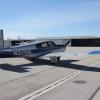Advice on getting my Commercial
-
Members Online
- EricJ
- MrFritz
- RoundTwo
- Marc_B
- FastGlasair
- Kelpro999
- UteM20F
- jrwilson
- SKI
- DEGWS
- mgtrevor
- swdirtrider
- Fabrice
- FlyingScot
- Aviationist
- Joshua Blackh4t
- mariosmt
- richardbrochu27
- ttflyer
- Utah20Gflyer
- BravoWhiskey
- hammdo
- Jim F
- da3b242
- M20F-1968
- Parker_Woodruff
- eman1200
- Boboli
- LANCECASPER
- RescueMunchkin
- JohnnyJ
- PT20J
- Ragsf15e
- Justin Schmidt
- avanti


Recommended Posts
Join the conversation
You can post now and register later. If you have an account, sign in now to post with your account.